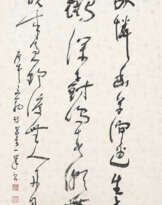ID 770391
Lot 1068 | RAO ZONGYI (1917-2018)
Valeur estimée
HKD 100 000 – 150 000
| Artiste: | Rao Zongyi (1917 - 2018) |
|---|
| Artiste: | Rao Zongyi (1917 - 2018) |
|---|
| Adresse de l'enchère |
CHRISTIE'S 18 Chater Road Central Hong Kong Hong Kong | ||||||||||||||
|---|---|---|---|---|---|---|---|---|---|---|---|---|---|---|---|
| Aperçu |
| ||||||||||||||
| Téléphone | +85227601766 | ||||||||||||||
| Fax | +852 2760 1767 | ||||||||||||||
| Conditions d'utilisation | Conditions d'utilisation | ||||||||||||||
| Heures d'ouverture | Heures d'ouverture
|













